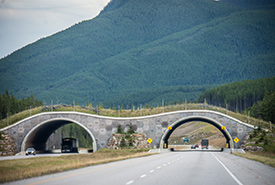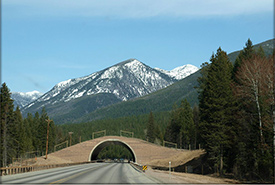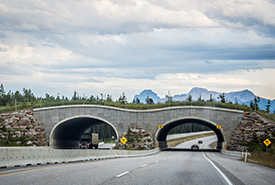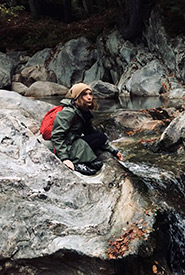Wildlife crossings: Opening the way for the good of wildlife

Wildlife crossings make roads safer. (Photo by Wikimedia Commons)
Whether in the form of bridges or tunnels, wildlife crossings make roads safer by protecting humans and animals from collisions while helping maintain the connectivity of natural environments.
“Things are not always what they seem: the deer isn't crossing the road; the road is crossing the forest.” Does this sentence look familiar? It has appeared all over social media, capturing the image of an adorable deer looking lost in the middle of a country road. Although nature was around long before asphalt, the idea of getting rid of all roads is utopian.
Collisions between animals and drivers is a very real issue. For example, between 2012 and 2016, the number of road accidents involving white-tailed deer increased by nearly 40 per cent in Quebec, according to the Société de l'assurance automobile du Québec.
However, there are ways to reduce collisions between wildlife and drivers and allow animals to move freely. Buildling wildlife crossings is one of them.
Related content
What is a wildlife crossing?

Wildlife crossings are structures that allow animals to safely cross barriers like roads.(Photo by Creative Commons)
Wildlife crossings are structures that allow animals to safely cross barriers like roads. In Europe and the U.S., the first wildlife crossings appeared in the 1950s. They appeared in Canada in the 1980s.
There are two main types of wildlife crossings: overpasses and underpasses. Overpasses include green bridges and footbridges, also known as ecoducts or animal bridges, while underpasses include tunnels and viaducts.
There are also species-specific wildlife crossings. For example, in Australia, there is a specific bridge for red crab migration on Christmas Island and rope bridges to help squirrels move to and from different wooded areas without going on the road.
Building connectivity
Beyond the problem of human and animal road safety, wildlife crossings make it possible to rebuild natural links broken by human development. Roads, farms and cities can divide habitats, isolating the animals and plants they support. Species isolation is a threat to their survival, so it is essential to maintain the connectivity of natural areas.

Trans-Canada Highway wildlife crossing in Banff, AB (Photo by Wikimedia Commons)
Under the influence of climate change, it is estimated that in Quebec, species will move northward at an average rate of 45 kilometres per decade. To adapt to these changes, it is important to maintain landscape connectivity to allow animals and plants to disperse.
Since 2017, the Nature Conservancy of Canada’s (NCC’s) Quebec Region has been leading the Ecological Corridors Project, a climate change adaptation strategy implemented with several partners. Its purpose is to let citizens and communities know about the importance of maintaining connectivity areas in their regions. Information from this project will hopefully mobilize and engage people to work together to conserve ecological corridors.
In addition to these activities, the project focuses on strategic areas for maintaining connectivity when planning new land acquisitions, including wildlife crossing development projects. For example, NCC recently acquired land in Ivry-sur-le-lac in the Laurentians. This will make it possible to adjust an existing tunnel under Highway 117, where wildlife will be able to cross roads in peace, thus improving the co-existence of drivers and animals on this part of the road. Cameras will be used to monitor the project's success.


